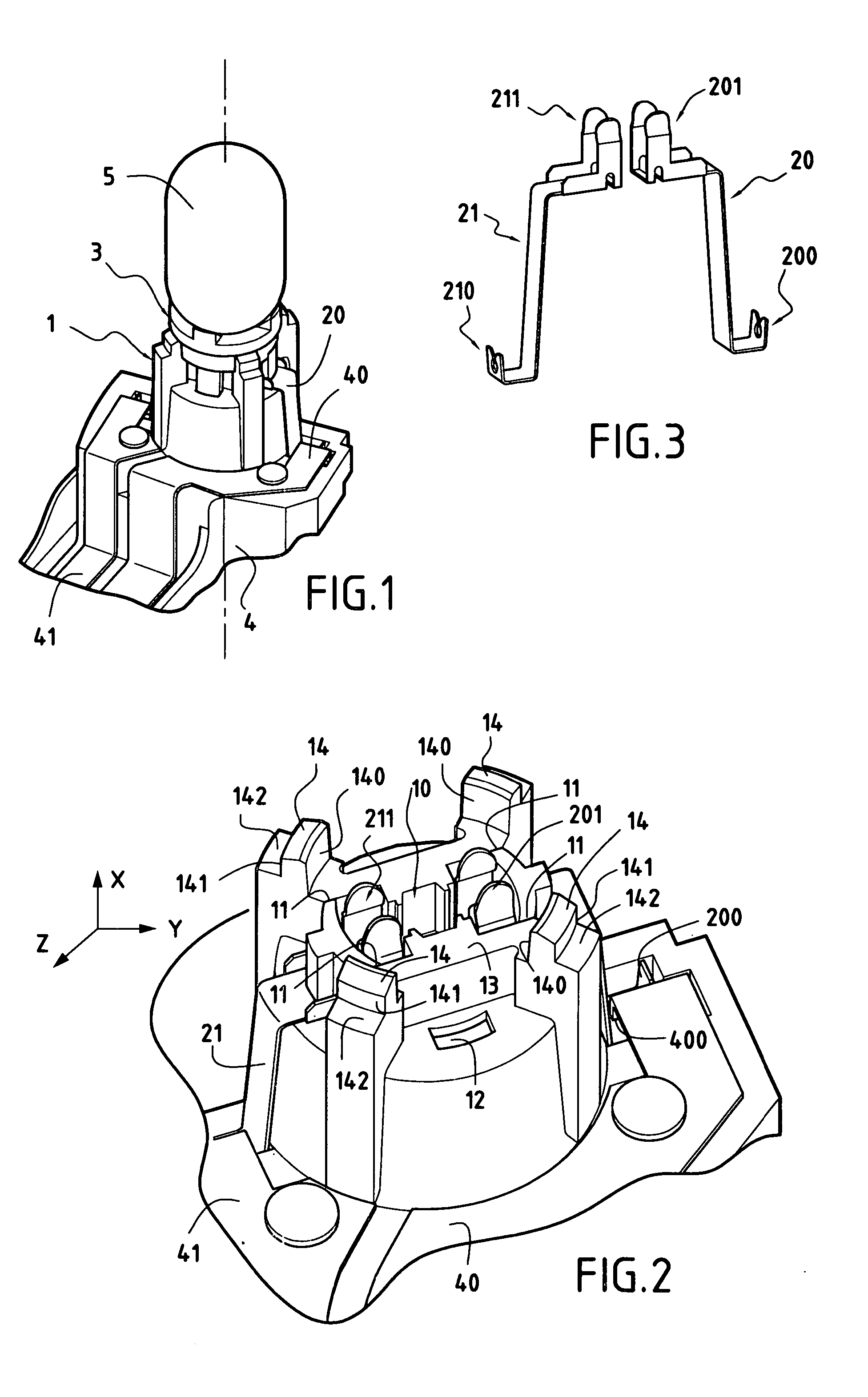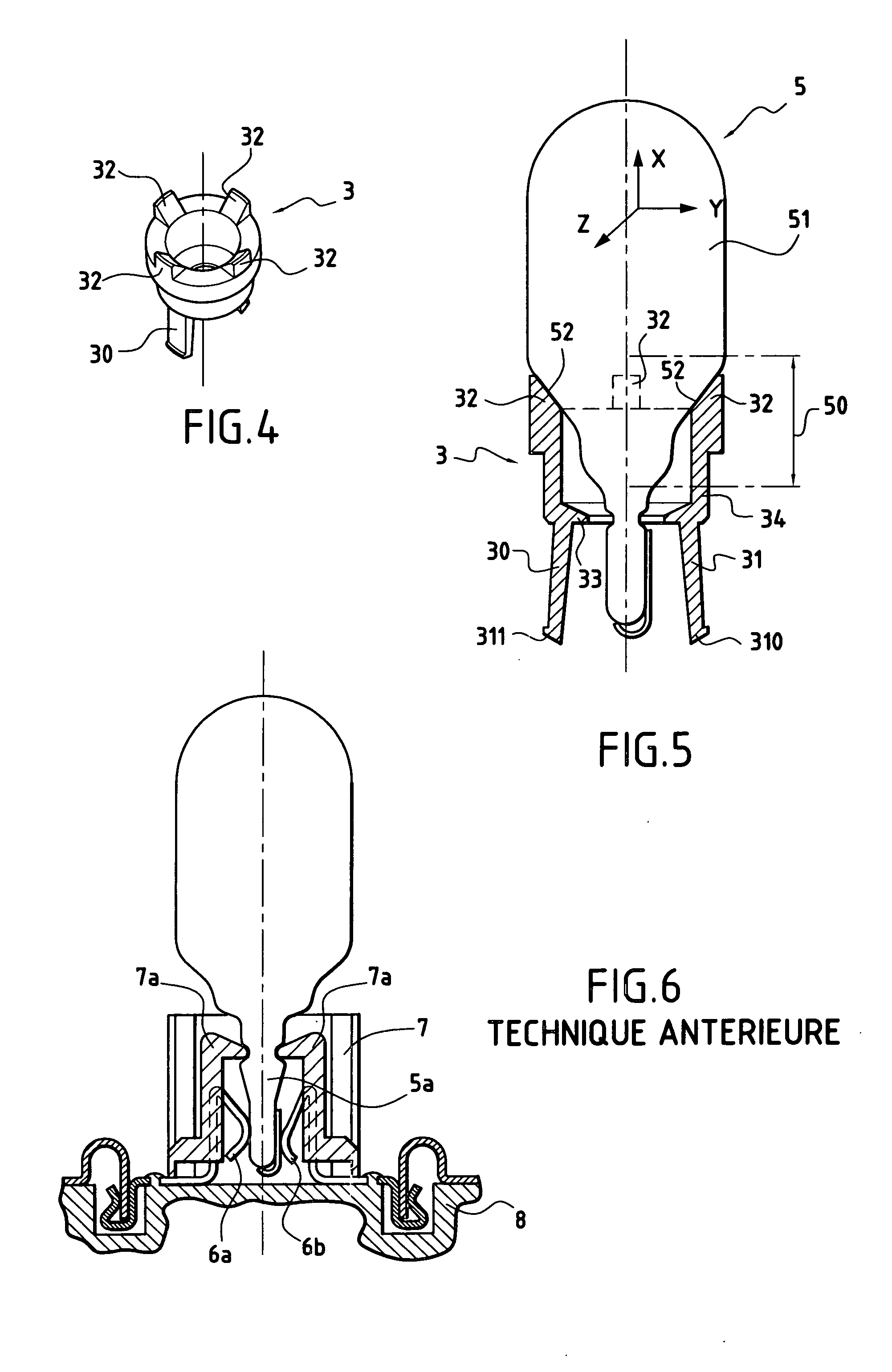Socket equipped with a centring ring for a wedge-base
a technology of sockets and wedge bases, which is applied in the direction of point-like light sources, coupling device connections, lighting and heating apparatus, etc., can solve the problems of limited use of wedge-base lamps, sockets that are currently available for wedge-base lamps are not very suited to signalling lights for automobiles, and sockets that respond poorly to mechanical stresses, etc., to achieve better cost compromise and easy production of different materials
- Summary
- Abstract
- Description
- Claims
- Application Information
AI Technical Summary
Benefits of technology
Problems solved by technology
Method used
Image
Examples
Embodiment Construction
[0034] The invention is now described in detail, essentially through a preferred embodiment in which the socket according to the invention is integrated in a lamp holder intended to be mounted on a unit of signalling lights for an automobile.
[0035] A lamp holder for signalling lights is conventionally formed from a moulded plastic body equipped with means of mechanical assembly and electrical connection. Lamps are inserted in the corresponding sockets in the lamp holder in order to be connected to the electrical supply circuit of the vehicle and form the light sources of the various lights in the signalling unit. After the insertion of the lamps, the lamp holder is assembled on the signalling unit and closes a rear opening in the latter.
[0036] With reference to FIGS. 1 and 2, the socket according to the invention comprises essentially a base 1, electrical connection strips 20 and 21 and a centring ring 3.
[0037] As shown in FIG. 1, a wedge-base lamp 5, for example of the W16W type...
PUM
 Login to View More
Login to View More Abstract
Description
Claims
Application Information
 Login to View More
Login to View More - R&D
- Intellectual Property
- Life Sciences
- Materials
- Tech Scout
- Unparalleled Data Quality
- Higher Quality Content
- 60% Fewer Hallucinations
Browse by: Latest US Patents, China's latest patents, Technical Efficacy Thesaurus, Application Domain, Technology Topic, Popular Technical Reports.
© 2025 PatSnap. All rights reserved.Legal|Privacy policy|Modern Slavery Act Transparency Statement|Sitemap|About US| Contact US: help@patsnap.com



